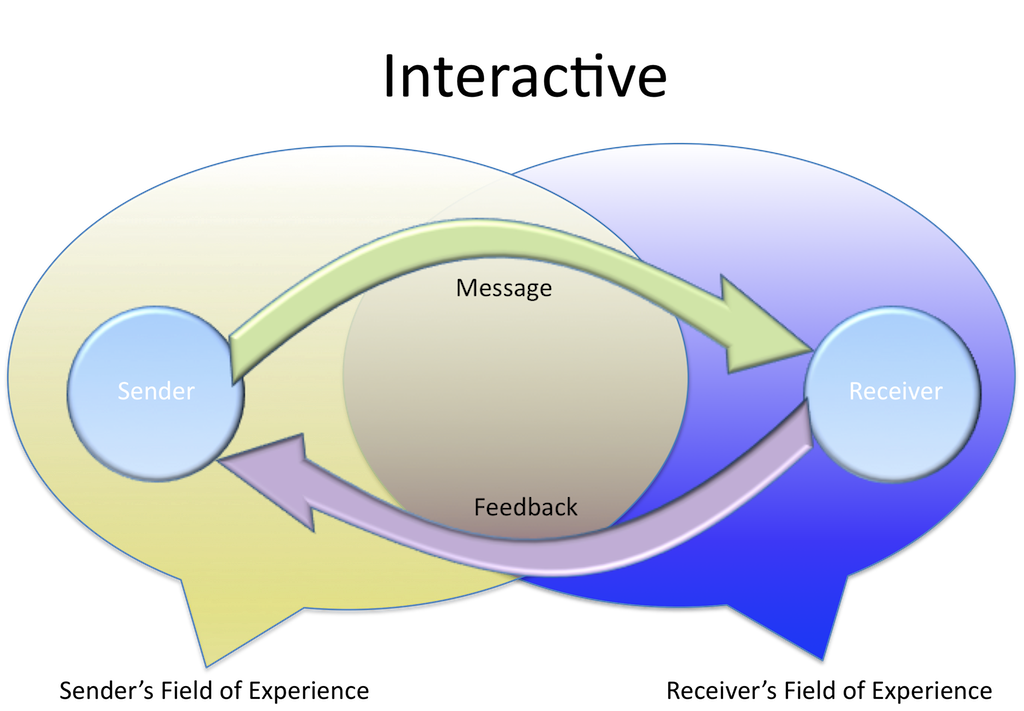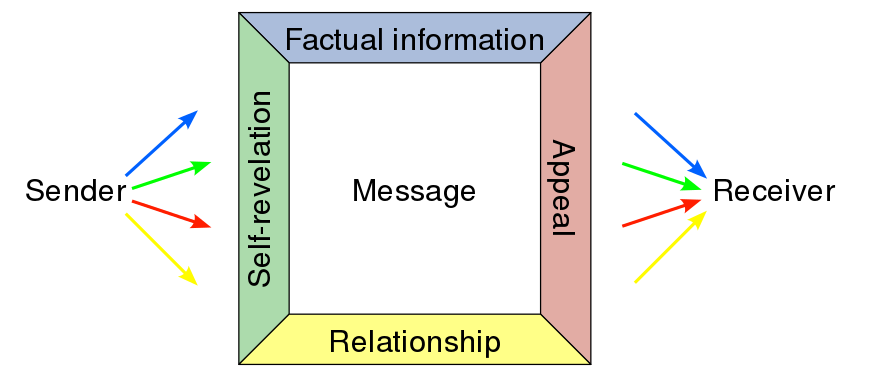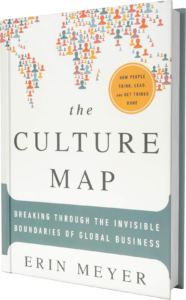Have you ever been in a “debate” with your friends and somehow it turned out to be a quarrel? Everyone must have stumbled across these types of frustrating communication experiences that you wanted to quit right away. Especially, when we unintentionally misinterpret messages or output wrong signals. So, what can we do to avoid such misunderstanding?
Communication is Mutual Understanding
As a communication science student (also a writer), we often examine the content, production, and effects within the media industry. Yet, the essence of communication has barely received attention amongst communicators. Therefore, we often neglect the process of communication and how we can communicate effectively from different cut-points throughout our verbal and non-verbal interactions.
The very primitive and standard communication model is called the Shannon and Weaver Model developed in 1948. It is assumed that communication is a linear process in which the sender sends messages and the receiver receives messages along with influences of external noises. As simple as it seems, the model provides a fundamental overview of how one-way communication is conducted.

Later on, scholars realized that communication is a bidirectional and on-going undertaking by both communicators called the Interaction Model. With the help of physical and psychological context, senders and receivers encode and decode messages continuously after which they give feedback and responses according to their interpretation and understanding.

If we do not know how communication works, we can never communicate effectively
Both the illustrated models provide us with a straightforward but enthralling grasp of how communication works in different contexts. You may now ask “Why is it crucial to know how communication works?” and the answer is simple: If we do not know how communication works, we can never communicate effectively.
Way back in the classical period of ancient Greece, Aristotle had recognized the significance of understanding communication and thus they can make a persuasive speech in front of their audience. Though his theory of communication more or less takes on a one-way and mass communication approach, he still touched upon the aspect of understanding the audience. Without knowing our audience, we can never make a speech successful This also applies to the context of multidirectional communication.
Learn How to Listen and Learn How to Express
Understanding our audience is just a prerequisite for effective communication while learning how to listen and express ourselves are the preceding stages of a thoughtful discussion.
As explained, even with the simplest communication models, the disruptions of communication that can be caused by external noises are reckoned by scholars and experts. German interpersonal communication specialist Friedemann Schulz von Thun proposed the Four-Sides Model of communication that misunderstanding can take place on every occasion. The theorist analogized the sending and receiving of messages as “beaks and ears”, and through the four sides of “beaks and ears”, the messages can be distorted due to several reasons. One of which is when the message is expressed with the speaker’s intended meaning, while the listener potentially interprets it in a completely different way, and this is how misunderstanding occurs.

Such misunderstandings are produced by specific contexts and sometimes we call it “communication barriers”. Communication barriers do not only occur when there is no common language that allows us to comprehend each other. These barriers can be psychological, physiological, physical, systematic, (or cultural, which will be discussed later) and attitudinal. Thanks to the barriers, we frequently misconceive what others say and express offhand remarks.
Henceforth, as social animals, we should learn how to communicate and avoid misunderstandings as much as possible. You can protect your 10-year friendship or marriage by using strategies like clarification and active listening.
Persuasion is Not The Point Zero of Communication
Though persuasive communication is one of the most popular domains within the communication and media industry, persuasion is not the point zero of communication.
Communication is multifaceted, we communicate to understand, inform, and sometimes persuade our audience. Though persuasive communication is one of the most popular domains within the communication and media industry, persuasion is not the point zero of communication.
Effective communication does not mean that your audience must be persuaded by you, on the contrary, it means that you both can take rivaling perspectives and still be able to exchange opinions through rational languages and logics. Try to stand in your counterpart’s shoes, listen and digest, and do not rush to conclusion.
The best-selling writer and philanthropist Tony Robbins has transcribed the core of effective communication is to “… realize that we are all different in the way we perceive the world and use this understanding as a guide to our communication with others”. To efficiently communicate and exchange opinions, we need to acknowledge personal differences and how we take stances, after which a constructive one can take place.
Learn The Differences: Direct and Indirect Communication
So how are the distinctions and differences created?
As promised, we will touch on the cultural barrier of communication. Cultural differences can be the main impetus for communication errors. Erin Meyer listed 8 different scales of communicative culture in her best-seller “The Culture Map”. For instance, the scale of communicating, people can be “high-context” and “low-context”, which entails varying types of expression. The former one can be found in societies with hierarchical systems like Japan and Korea, so they tend to express implicitly, where the receiver of the message can “read between the lines”. On the other hand, low-context speakers like the Dutch and Australian say a good message is meant to be “precise, simple and clear”. Therefore, presumably, there may be a certain level of misunderstanding between people from Japanese and Dutch cultures.

Another “culprit” is gender differences. Deborah Tannen, a professor of linguistics at Georgetown University, has lodged the concept of gender differences in conversation styles. No matter how the gender differences are socially constructed or inherited, Tannen has found by evidence that women are more aware of the inherent power people hold. Young female managers, most of the time, are able to avoid offending subordinates and colleagues with the use of indirect language. This is done with a view to saving faces for the message receiver.

Recall the Four-Sides model by von Thun, relationship plays a certain role in communication. Are you more explicit with your parents? Or are you more suppressed when talking to your professor? These relational or social contexts are crucial in determining direct and indirect communication. These contexts stem from the longstanding and monolithic cultural differences in different societies – like the Netherland’s egalitarianism versus Japan’s hierarchical culture, which shape the styles of how people communicate.
Robin Lakoff’s linguistic politeness shed a light on how the construction of both direct and indirect messages can form better communicative relationships. Lakoff suggested that we shall often keep a distance with people, give people options in order to develop deference, and equip a sense of camaraderie. The “polite” and indirect messages allow a sense of equality, produce empathy, and exclude unnecessary personal emotions. All these contribute to the motivations why people try to be indirect amongst occasions and environments.
Beliefs Are Not Arguments and Do Not Beg The Question
This article particularly wants to distinguish the differences between beliefs (or belief system) and opinions. According to Fowler, beliefs “[are] conviction(s) based on cultural or personal faith, morality, or values … that cannot be disproved or even contested in a rational or logical manner”. On the other hand, opinion is “a judgement based on fact”. There is a clear-cut difference between these two concepts, but we are at times deluded and misguided by our beliefs and decorate our beliefs as our arguments. If you argue your standpoint with a belief, the logic will be distorted, if not destroyed. A typical example of belief-as-opinion is the “Flat Earth Theory”. Flat-earthers are skeptical about NASA, physics, moons, and astronomy because they are the believers of such a theory yet, they can hardly provide empirical evidence to reject the existing proofs established by experts. The flat Earth belief drives them to find favorable and conspiring evidence and ignore other objective and well-proven facts, this is well known as a “confirmation bias”.
Another dangerous mindset that can perhaps impede effective communication is the fallacy of petitio principii or “begging the question”. It never makes sense if people manipulate the premise or assumptions as their argument to convince opponents. Begging the question only works for people who share the same belief with the speaker, just like how Christians “prove” the existence of God and the trustworthiness of the Bible with the fallacious logic of “Because the Bible says God is real, so God is real. And because God is real, the Bible is real too.” Without a saying, people can have their own beliefs and opinions, but never using your belief as your argument is important because this will most likely result in a “I believe therefore it is correct and vice versa” type of vicious cycle.
Communicate to Understand The World
One thing we need to know is that we should communicate to learn and also learn to communicate so that we can communicate effectively.
There are no certain right or wrong ways to communicate in the multifold characteristics of communication contexts and in which we communicate distinguishingly. One thing we need to know is that we should communicate to learn and also learn to communicate so that we can communicate effectively.
Efficient communication is vital to different aspects of life, interpersonal relationships, workplace, cross-cultural occasions, so on and so forth. If we can communicate effectively, we can sympathize with each other with more empathy, affinity, and apprehension. Start from acknowledging differences, then attempt to understand, and ultimately you can make logical, rational, and persuasive arguments.
Cover: Bewakoof.com





